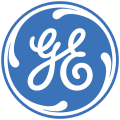 | |
| Company type | Subsidiary |
|---|---|
| Industry | Transportation Energy Mining |
| Founded | 1907 |
| Headquarters | , United States |
Area served | Worldwide |
Key people | Rafael Santana (President and CEO) [1] |
| Products | Evolution Series Locomotive Dash Series Locomotive L250 Marine Engine 360 AC Drive Systems 752 DC Drilling Motor Wind Turbine Drive Systems V228 Series engine Durathon UPS |
| Revenue | US $8.2 Billion (2019) |
Number of employees | 27,000+ |
| Parent | Wabtec |
| Divisions | Rail Marine Mining Drilling Wind Stationary Power Energy Storage |
| Website | www |
GE Transportation is a division of Wabtec. It was known as GE Rail and owned by General Electric until sold to Wabtec on February 25, 2019. The organization manufactures equipment for the railroad, marine, mining, drilling and energy generation industries. The company was founded in 1907. It is headquartered in Pittsburgh, Pennsylvania, while its main manufacturing facility is located in Erie, Pennsylvania. Locomotives are assembled at the Erie plant, while engine manufacturing takes place in Grove City, Pennsylvania. [2] In May 2011, the company announced plans to build a second locomotive factory in Fort Worth, Texas, which opened in January 2013.


